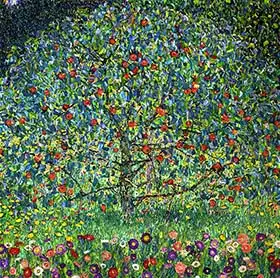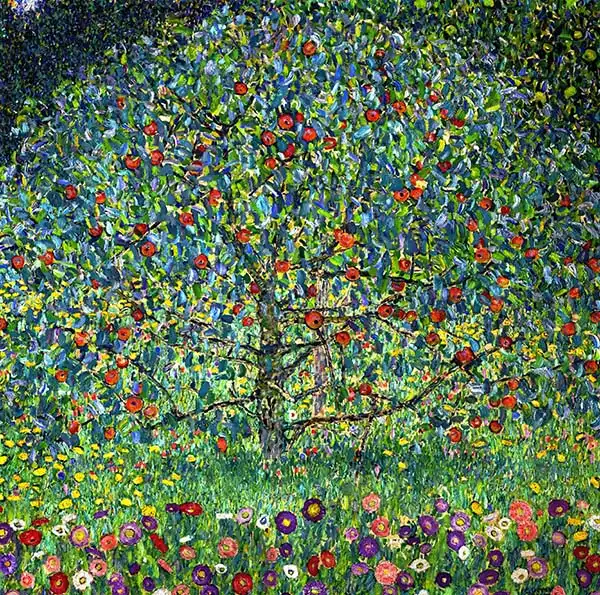Apple tree
Date:
1912Medium:
oil on canvasLocation:
private collectionDimensions:
110 x 110Apple tree I is one of three
Klimt's paintings, which portrays a tree festooned with apples. The oldest piece is a golden apple from 1903, which was unfortunately destroyed by a fire in 1942, than this painting, Apple I, which has often been compared to the third work,
Apple II , but it is actually much more colorful and positive. Although we do not fully understand his symbolism behind apple trees, it seems that it should have had some meaning for him, as he returned to this theme several times. Apple trees appear in a number of myths and legends, as for examble the tree of the knowledge in Paradise in Christian and Jewish tradition, or an aplle as a gift to Paris from Aphrodite or an attribute of Heracles in Greek mythology.
Klimt painted those works in different periods of his life, so it is likely, that it did not bear only one meaning for him.
Klimt painted picture Apple tree in 1912. Prevailing color of this fine art print is green and its shape is square. Original size is 110 x 110. This art piece is located in a private collection This image is printed on demand - you can choose material, size and finishing.
Gustav Klimt (1862-1918). As a painter, Klimt represents the best period of Vienna – a time when the works of Sigmund Freud or Mahler were developing, and Vienna was at the very least the Central European centre of culture and education. Klimt’s work combines
symbolism and Byzantine features that create the undertone of his Art Nouveau style. Klimt’s images have a special, even anxious, atmosphere that often shows the Freudian idea of erotica in any human movement and action. Klimt paints two-dimensionally, with intense colour while at the same time very gently and with refined dignity. Among Klimt’s famous works are the
Water Snakes - two women with stylized, interwoven bodies that evoke the surreal world of fantasy and sensuality. Another masterpiece is
Danae, a work inspired by Greek mythology, depicting a girl seized by Zeus, who was turned into a golden rain (Danae later gave birth to Perseus). His paintings often aroused passions and public protests, not only for their content but also for the innovative painting methods - eg.
The Girlfriends, an image of two women at a romantic meeting.


